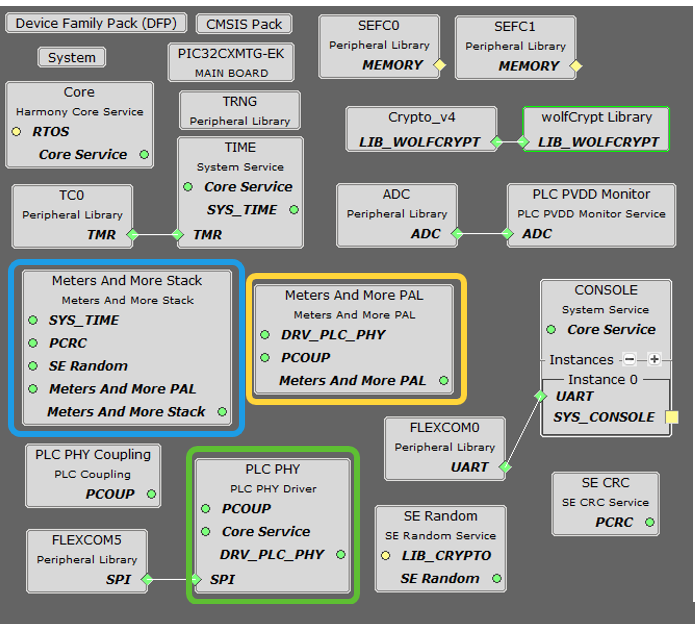1 MPLAB® Harmony Smart Energy Meters And More Stack
The Smart Energy Meters And More Stack is the Microchip implementation of the Meters And More standard. It is a Smart Metering solution which provides communication capabilities using PLC (PowerLine Communication).
The following image shows the complete Meters And More protocol stack:

Meters And More in a Nutshell
- very short message exchanges, optimized for narrowband powerline
- use of a BPSK modulation the allows the communication to reach a coded bit-rate of 4800 bps
- optimization of communication paths
- support to a high level of encryption and authentication, by the use of symmetric key based 128 bit AES algorithms
- automatic network configuration and management
- re-transmission management
The Data Link layer is designed in order to perform key functionalities such as repetition, data protection and optimization of media access.
The Application layer provides authentication functionality to ensures a high level of security and advanced features of network management, and accesses configuration parameters and measurement data defined in the data model.
Meters And More Implementation in Harmony
The Harmony Smart Energy Meters And More Stack comprises the Data Link Layer and part of the Application Layer shown in the above figure. Physical Layer Driver is also part of the Harmony 3 ecosystem, but is considered besides the Meters And More Stack, not part of it.
- The Meters And More Stack is highlighted in blue. It corresponds to the data link layer and application layer in the Block Diagram on top of this page.
- The Meters And More PAL is highlighted in yellow. It is an Abstraction Layer between the Meters And More Stack and the PLC PHY Driver, so changing the PAL contents, different PHYs (transceivers) can be used. It is an implementation specific layer, not part of the layers model.
- The PLC PHY Driver is highlighted in green. It manages the Physical Layer, which is running in the PLC transceiver, through an SPI interface.

- SE Random. Abstracts the generation of random numbers, so Meters And More layers have a single API to generate random values, whathever the below implementation.
- SE CRC. Same as Random, provides an abstraction API for CRC calculation.
- Lib Crypto. Harmony Cryptographic Library, provides cryptographic services to every Harmony module.
